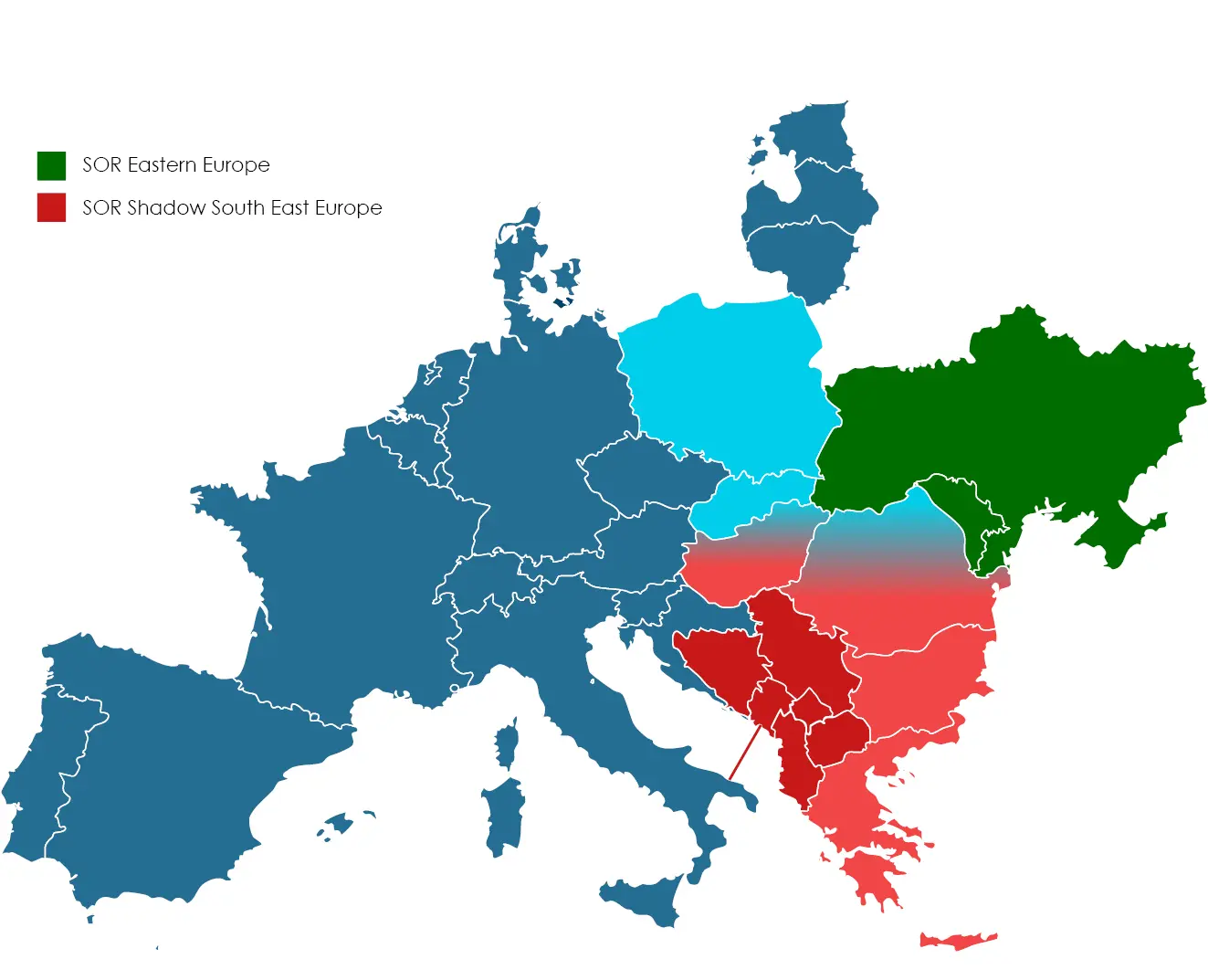Bidding zone review
When reporting on structural congestions in accordance with CACM ENTSO-E shall extend this report to include CPs (including whether 70% pursuant to Art. 16 or linear trajectory pursuant to Art.15 was reached)
A bidding zone review shall be carried out for the Contracting Parties for bidding zones in the same capacity calculation region established in accordance with Article 15 of CACM, at the latest six months following the first report by the ENTSO-E in accordance with the provision above, but not later than 31 December 2025.
Where structural congestion has been identified, the CP shall in cooperation with its TSOs decide, within six months of the receipt of the report, either to establish national or multinational action plans pursuant to Article 15, or to review and amend its bidding zone configuration.
For those CPs that have opted to amend the bidding zone configuration, the relevant CPs in the same capacity calculation shall reach a unanimous decision within six months. The decision shall be reasoned and shall be notified to the Energy Community Secretariat and the Energy Community Regulatory Board. In the event that the relevant Contracting Parties fail to reach a unanimous decision within those six months, they shall immediately notify the Energy Community Regulatory Board thereof. As a measure of last resort, the Energy Community Regulatory Board and after consulting the Energy Community Secretariat, shall adopt a decision whether to amend or maintain the bidding zone configuration in and between those Contracting Parties by six months after receipt of such a notification.
Contracting Parties which have decided to develop an action plan shall do so in cooperation with their regulatory authorities. That action plan shall contain a concrete timetable for adopting measures to reduce the structural congestions identified within four years.
!
70% available capacity for cross-zonal trade to be achieved from 1 January 2028.
Under the action plan Contracting Parties need to ensure that cross-zonal trade capacity is increased on an annual basis until the minimum 70 % cross-zonal capacity rule provided for in Electricity Regulation is reached. That minimum capacity shall be reached by 31 December 2027.
The relevant transmission system operators shall on an annual basis, during the implementation of the action plan and within six months of its expiry, assess for the previous 12 months whether the available cross-border capacity has reached the linear trajectory or, from 1 January 2028, the minimum 70 % capacities have been achieved. They shall submit their assessments to the Energy Community Regulatory Board and to the relevant regulatory authorities.
For those Contracting Parties for which the assessments demonstrate that a transmission system operator has not complied with the linear trajectory, the relevant Contracting Parties shall, within six months of receipt of the assessment report, decide unanimously whether to amend or maintain the bidding zone configuration within and between those Contracting Parties. The relevant Contracting Parties‘ decision shall be substantiated and shall be notified to the Energy Community Secretariat and the Energy Community Regulatory Board.
The relevant Contracting Parties shall notify the Energy Community Secretariat immediately if they fail to reach a unanimous decision within the timeframe laid down. Within six months of receipt of such notification, the Energy Community Secretariat, as a last resort and after consulting the Agency for the Cooperation of Energy Regulators, the Energy Community Regulatory Board and the relevant stakeholders shall adopt a decision whether to amend or maintain the bidding zone configuration in and between those Contracting Parties.
Six months before the expiry of the action plan, the Contracting Parties with identified structural congestion shall decide whether to address remaining congestion by amending its bidding zone or whether to address remaining internal congestion with remedial actions for which it shall cover the costs.
General principles of capacity allocation and congestion management
Transaction curtailment procedures shall be used only in emergency situations, namely where the transmission system operator must act in an expeditious manner and redispatching or countertrading is not possible. Any such procedure shall be applied in a non-discriminatory manner. Except in cases of force majeure, market participants that have been allocated capacity shall be compensated for any such curtailment.
The maximum level of interconnector capacity and the transmission networks affected by cross-border trade, between Parties to the Energy Community shall be made available to market participants complying with the safety standards of secure network operation. Counter-trading and redispatch, shall be used to maximise available capacities to reach the minimum 70 % capacity. A coordinated and non-discriminatory process for cross-border remedial actions shall be applied to enable such maximisation, following the implementation of a redispatching and counter-trading cost-sharing methodology.
Capacity shall be allocated by means of explicit capacity auctions or implicit auctions including both capacity and energy. Both methods may coexist on the same interconnection. For intraday trade, continuous trading, which may be complemented by auctions, shall be used.
Transmission system operators shall not limit the volume of interconnection capacity to be made available to market participants as a means of solving congestion inside their own bidding zone. The following minimum levels of available capacity for cross-zonal trade shall be reached:
-
for borders using a coordinated net transmission capacity approach, the minimum capacity shall be 70 % of the transmission capacity respecting operational security limits after deduction of contingencies;
-
for borders using a flow-based approach, the minimum capacity shall be a margin set in the capacity calculation process as available for flows induced by cross-zonal exchange. The margin shall be 70 % of the capacity respecting operational security limits of internal and cross-zonal critical network elements, taking into account contingencies.
At the request of the transmission system operators in a capacity calculation region, the relevant regulatory authorities may grant a derogation from the minimum capacity levels on foreseeable grounds where necessary for maintaining operational security. Such derogations, shall be granted for no more than one-year at a time, or, provided that the extent of the derogation decreases significantly after the first year, up to a maximum of two years.
Where a derogation is granted, the relevant transmission system operators shall develop and publish a methodology and projects that shall provide a long-term solution to the issue that the derogation seeks to address.




